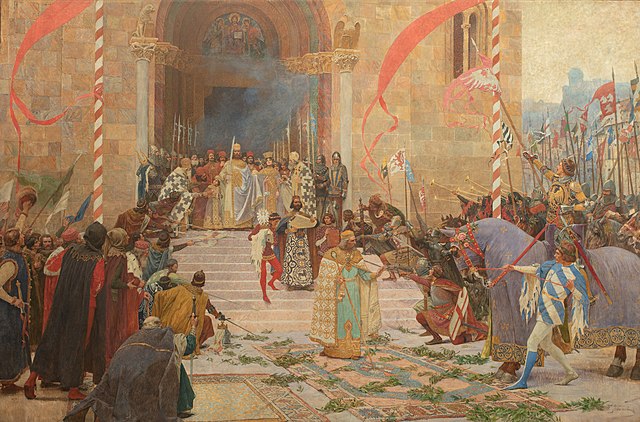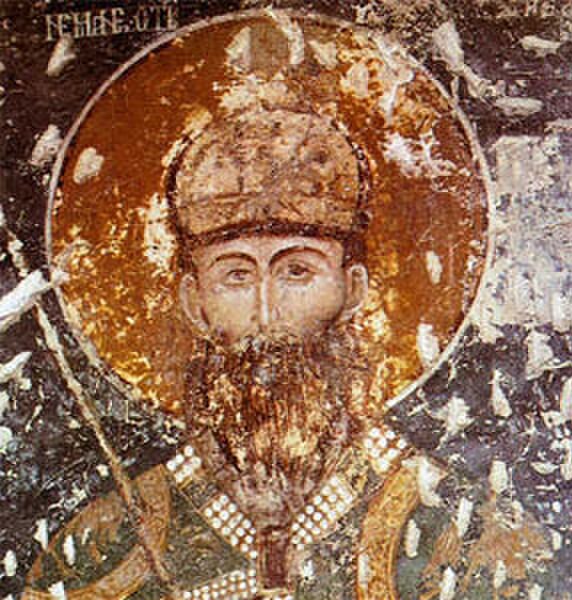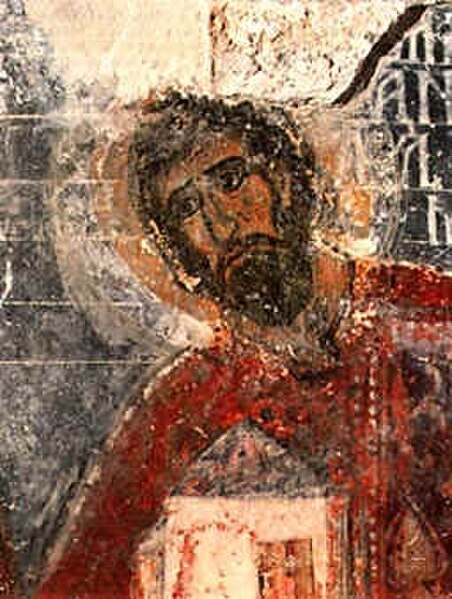Stefan Uroš II Milutin, known as Saint King, was the King of Serbia between 1282–1321, a member of the Nemanjić dynasty. He was one of the most powerful rulers of Serbia in the Middle Ages and one of the most prominent European monarchs of his time. Milutin is credited with strongly resisting the efforts of Byzantine Emperor Michael VIII Palaiologos to impose Roman Catholicism on the Balkans after the Union of Lyons in 1274. During his reign, Serbian economic power grew rapidly, mostly due to the development of mining. He founded Novo Brdo, which became an internationally important silver mining site. As most of the Nemanjić monarchs, he was proclaimed a saint by the Serbian Orthodox Church with a feast day on October 30.
King Milutin, founder's portrait (fresco) in King's Church of the Studenica Monastery, painted during his lifetime, around 1314
Young Milutin, fresco at Sopoćani
Victory of King Milutin over the Tatars (Mongols) (1853) by Anastas Jovanović
Novo Brdo Fortress was built by Stefan Milutin in 1285.
Kingdom of Serbia (medieval)
The Kingdom of Serbia, or the Serbian Kingdom, was a medieval Serbian state that existed from 1217 to 1346 and was ruled by the Nemanjić dynasty. The Grand Principality of Serbia was elevated with the regal coronation of Stefan Nemanjić as king, after the reunification of Serbian lands. In 1219, Serbian Orthodox Church was reorganized as an autocephalous archbishopric, headed by Saint Sava. The kingdom was proclaimed an empire in 1346, but kingship was not abolished as an institution, since the title of a king was used as an official designation for a co-ruler of the emperor.
Serbia by 1265, during the rule of Stefan Uroš I of Serbia
Coronation of Tsar Dušan
Image: Stefan the First Crowned, Ljeviška
Image: Stefanradoslav








